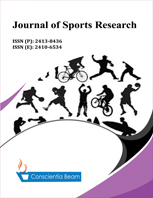Electrophysiological Biomarkers for the Assessment of Motor Efficiency in Sport
DOI:
https://doi.org/10.18488/90.v9i1.2897Abstract
Many disciplines have approached the study of human motor behavior. The motor learning theory based on information processing proposes a learning loop through interaction between the external environment and the central nervous system. Different neuroscience fields and technological advances provide a new perspective for the intensive study of the intrinsic processes of motor behavior, which modify the most visible aspect: motor efficiency. The aim of the present review was to determine which cortical and muscular electrophysiological biomarkers available in the literature could be representative for the study and quantification of motor efficiency. In this review, a survey of the literature related to motor production has been performed. The continuous development of biological signal monitoring techniques has allowed to understand part of the communication methods of the central nervous system, the integration of neural networks, and the interaction between different anatomic structures through rhythmic patterns of discharge known as brain waves. Motor production has been characterized by detecting electrophysiological biomarkers, taking into account the connectivity that can be represented by the corticomuscular and intermuscular coherence indices in different frequency bands. The present work proposes an approach to use these biomarkers on beta-band (for muscle stability synergies) and gamma-band (for mobility synergies). These indices will allow establishing quantitative parameters for motor efficiency, which could improve the precision of sports assessment.

